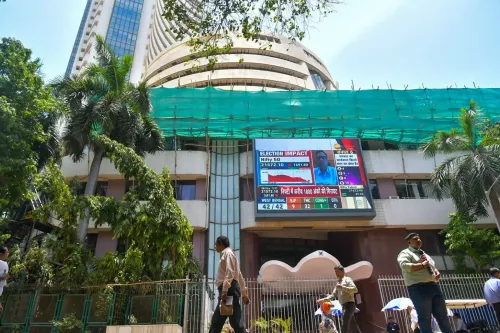Did Over 98 Lakh Cataract Surgeries Occur in FY25, the Most in 5 Years?

Synopsis
Key Takeaways
- Over 98 lakh cataract surgeries were conducted in FY25.
- The NPCB&VI played a crucial role in eye health improvement.
- Significant funding was allocated for modern ophthalmic equipment.
- Free spectacles were provided to schoolchildren.
- India successfully eliminated trachoma as a public health concern.
New Delhi, July 30 (NationPress) More than 98 lakh cataract surgeries were carried out in the financial year 2024-25, as revealed by Union Minister of State for Health and Family Welfare, Prataprao Jadhav. In a written statement to the Rajya Sabha, Jadhav highlighted that the surgeries conducted under the National Programme for Control of Blindness and Visual Impairment (NPCB&VI) in 2024-25 marked the highest tally in the past five years.
“In 2020-21, the number of surgeries was 35,50,765. This increased to 61,98,830 in 2021-22, 83,44,824 in 2022-23, and 90,29,242 in 2023-24,” stated Jadhav.
Moreover, the Minister pointed out that a total of 4,34,48,416 individuals have directly benefited from NPCB&VI since the fiscal year 2020-21.
“In 2020-21, the program aided 40,31,340 people, which rose to 70,89,142 in 2021-22. In 2022-23, 98,81,022 individuals benefited, with the numbers reaching 1,06,91,727 in 2023-24 and 1,17,55,185 in the fiscal year 2024-25,” Jadhav added.
The benefits encompass cataract surgeries, complimentary spectacles for schoolchildren with refractive errors, and treatment for various eye conditions (like diabetic retinopathy, glaucoma, childhood blindness, keratoplasty, vitreoretinal surgery, etc.).
In 2024-25, the program provided 12,14,395 schoolchildren with free spectacles and treated 6,47,111 individuals for various eye diseases, according to the Minister.
Additionally, Jadhav noted that “in 2025, three multipurpose district mobile ophthalmic units were established under NPCBVI.”
States and Union Territories received significant funding for acquiring advanced ophthalmic equipment.
“Under NPCBVI, indigenous cornea storage media have been developed to facilitate cornea transplants in the country,” Jadhav stated.
Meanwhile, the NPCBVI has played a pivotal role in the elimination of trachoma over the years. The initiatives taken under this program have enabled India to become the third country globally to eradicate this disease, which leads to irreversible blindness, as a public health concern.
Trachoma is an eye disease caused by the bacterium Chlamydia trachomatis, remaining a public health issue in 42 countries and responsible for blindness or visual impairment in approximately 1.9 million people.








